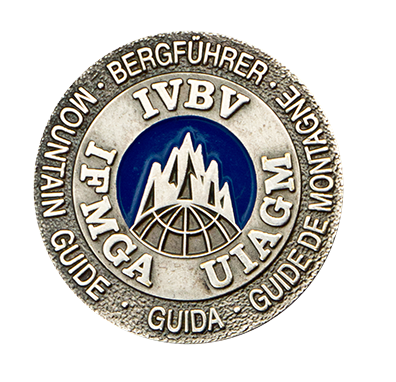A shortened version of this article, along with photos from Matt Kennedy, appeared in The Avalanche Review in Fall 2024.
Rob Coppolillo, February 9, 1970 — April 18, 2024
On April 18 we lost one of our great mountain souls. Rob Coppolillo died from a crevasse fall while ski guiding on the Icefall Traverse near Golden, British Columbia. He leaves behind his wife Rebecca Yarmouth and twin 14-year old sons Dominic and Luca.
Rob was a devoted father, husband, guide, writer, chef, story teller, and a friend to all. He grew up in Denver, went to college in Boulder where he lived in the road cycling scene, wrote about road cycling, and hosted legendary parties. Later in Boulder he shifted to climbing, skiing, and guiding. In 2015 he received his IFMGA Mountain Guide license, the Ph.D of mountains. With his family, he lived in Chamonix, France, then settled in Seattle where he continued to guide, teach avalanche courses, and write.
Rob was in his own category. He was a loyal friend with everyone, 300 of which were his best friend. “Preferring the hug to the handshake,” said Timmy O’Neil. Rob would give you all of himself, being fully present, fully engaged, bringing out the best in everyone. His constant dinner parties were full of Italian food, wine, friends, and laughter.
Rob was also known to be profanely funny, putting everyone in stitches, at humor that would have anyone else cancelled. “In one breath he could tell the dirtiest joke. In the next he could give you a lesson in Italian wines,” said Jimmy Mohan. “He’s Hunter S. Thompson meets Bill Murray,” said Bob Soderstrom. Extremely well-read, and he’s under the impression life is a performance piece. “It was this line between unbelievably endearing and totally inappropriate at all times,” said Rebecca.
“We, and the world, need more Rob,” said Timmy O’Neil
Rob thought outside the box in which most mountain guides could be placed. A voracious reader, with a diverse intelligence, and a mind further liberated by MDMA, he was open to ideas, absorbed them, and put them to use. He bucked the corporate America guide service norm in favor of working for himself and making a living wage when guiding and teaching avalanche courses. He was fascinated by the human mind and how we think in the avalanche patch. Writing took his curiosity and knowledge to the next level.
In addition to many magazine and online article, Rob wrote three books. During his cycling years he wrote, Holy Spokes!: A Biking Bible for Everyone. When he shifted to guiding, he wrote The Mountain Guide Manual with Marc Chauvin and The Ski Guide Manual. Rob’s last article for The Avalanche Review—The Wolverine and the Mercenary (TAR 42.2)—shares how we tell ourselves stories, some of them detrimental when in the avalanche patch, and how we can turn those stories into safety. The article shows Rob as the perpetual thinker, “I started tinkering with this idea a couple years ago.” Then, later in the article, “Beware the skier/patroller/guide with only answers, never questions.” Rob shared plans for his next book that would go beyond guiding and help workers in other risky professions make better decisions and reduce risk.
Perhaps his favorite method for exploring ideas was to debrief. “As soon as where we were out of the mountains his first question would be, ‘Where were we most at risk?’” Says IFMGA Mountain Guide Mikey Arnold, “It wasn’t about climbing or skiing the hardest. It was about being in the mountains, and then it was more than that, to understand risk, mindset. He had no hesitation with talking about what happened, whereas others would hole up.”
If Rob’s accident had happened to anyone else, Rob would have circled up with guides and beers to learn, to avoid making that mistake himself, and help others avoid that mistake. Rob was a seasoned master at finding the learning points, without second guessing someones’ decisions. Rob may have reminded us to wear a tether from our belay loop to our shoulder strap when glacier skiing. He’d remind us to aim for skiing on glaciers with a thick seasonal snowpack that bridge the cracks. Rob would tell us the probe is our best friend on glaciers: probe for snow thickness, bridge thickness, and rest areas. He’d tell us to be diligent about group gear checks before heading out for the day. Most find this much diligence exhausting, turning a backcountry vacation into mental PowerPoint of checklists and acronyms, but Rob showed us how to make safety fun.
“Rob’s death was tragically unlucky,” said King Grant, who was with him at Icefall. Rob was a master at reducing risk. He was smart, cautious, and thoughtful in the mountains. He wasn’t pushing it. He didn’t deserve it. It was horribly unfair. All he did was take a step in wrong direction to take a leak. Just as us mountain guides have done thousands of times before. But we’ve been lucky. The mountains are dangerous and painfully unfair. We (I) need to be more diligent in the uncaring mountains. To be a safer and better person, like Rob showed us.
We miss you so much brother.


















